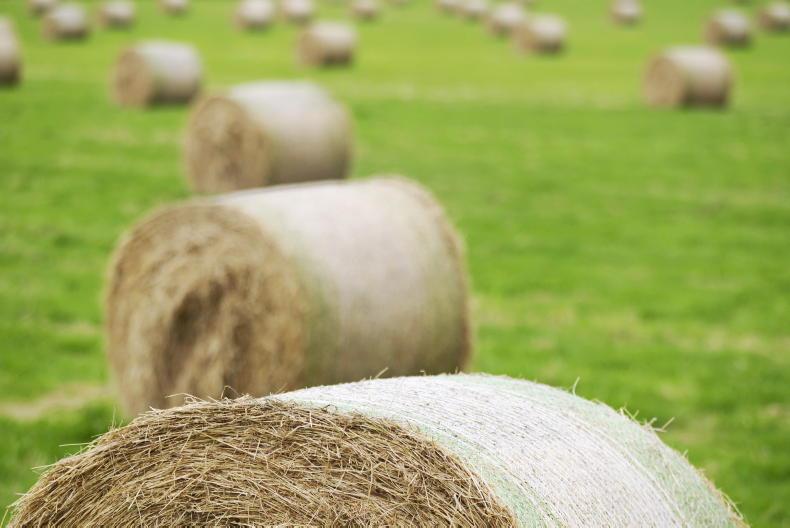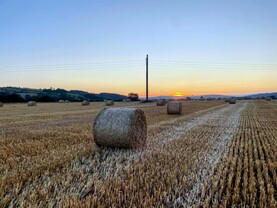While we tried the two row winter barley last week, we came to the conclusion that we should leave it for a few days to let the crop even up and the green in the tramlines ripen.
If it was for the feed market, we would certainly have availed of the good weather and gone ahead, but the stout roasting market is particular and we will try and meet its demands.
On the other hand, all the six row winter barley in the area is done and dusted.
At this stage, the sooner our own is done the better.
One job that was finished was the weed control in the oilseed rape.
We put in a pod sticker with the herbicide, so we have now pencilled in 7 August or so for the oilseed rape harvest.
We had one year when we couldn’t get to a treated crop for ten days with continuous rain but the yield was still acceptable when the pod stick was used, so in many ways it’s buying peace of mind.
Baling hay
We also got the hay baled in excellent conditions and in ideal weather without a drop of rain. After being turned twice and rowed, it was fully fit to bale into standard 4x4 round bales.
I reckon it’s probably among the best hay we have ever had, though we are not alone as I have never seen as much hay safely baled around the area.
On the cattle side the first load of replacement stores arrived.
The cost of what are admittedly decent looking cattle really took me aback.
This is the first time I can ever remember beef prices actually hardening in the second week in July, but if these new store cattle are to leave any margin, beef will have to approach the €8/kg level on a continuous basis.
This sets a whole new price point for the sector but from a farming point of view, it means the amount of money needed to stock a farm has grown over the last few years by about 50% on a rough calculation and, with the increased capital needed comes increased risk.
I would be interested to see an analysis from any of the major banks as to what percentage of money invested in cattle for beef is actually borrowed.
We have now reached the stage where almost 90% of the cattle on the place have an ICBF generated commercial beef value (CBV) based on their genetic capacity to produce beef efficiently.
It’s a resource with enormous potential. But first we want to correlate for this year the actual profit per beast with its CBV.






 This is a subscriber-only article
This is a subscriber-only article










SHARING OPTIONS: